Columns rose on either side of us, fluting up into a blue sky. A worn marble walkway sloped down the hill. Throngs of people moved past each other. They pointed and murmured, Spanish and Turkish and Japanese blending into a low, awed hum.
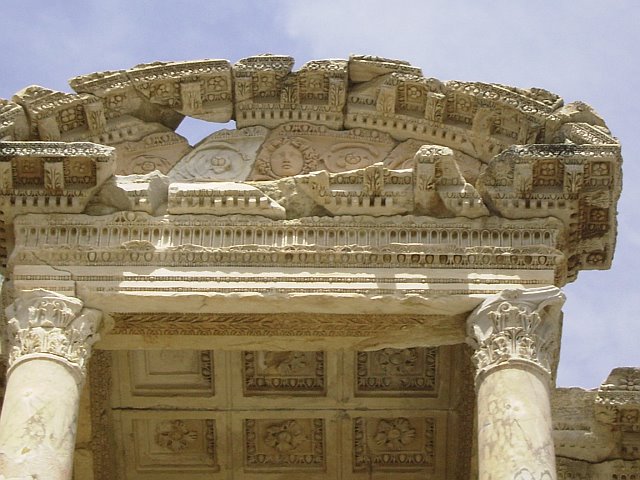 It must have been a similar scene 2,000 years ago. In ancient times, this city, Ephesus, was the second-largest in the Mediterranean after Rome. As capital of Asia Minor, Ephesus would have drawn travelers and traders from across the Empire. Originally, it was also a major port; but centuries of siltation have separated Ephesus from the ocean.
It must have been a similar scene 2,000 years ago. In ancient times, this city, Ephesus, was the second-largest in the Mediterranean after Rome. As capital of Asia Minor, Ephesus would have drawn travelers and traders from across the Empire. Originally, it was also a major port; but centuries of siltation have separated Ephesus from the ocean.
Now, perched in dry hills a few miles outside the Turkish town of Selçuk, Ephesus is a major tourist destination. Like the great European ruins (though technically, Ephesus lies in Asia), the city prickles the imagination. Walking through theaters and temples, it is easy to imagine a vibrant metropolis at its peak.
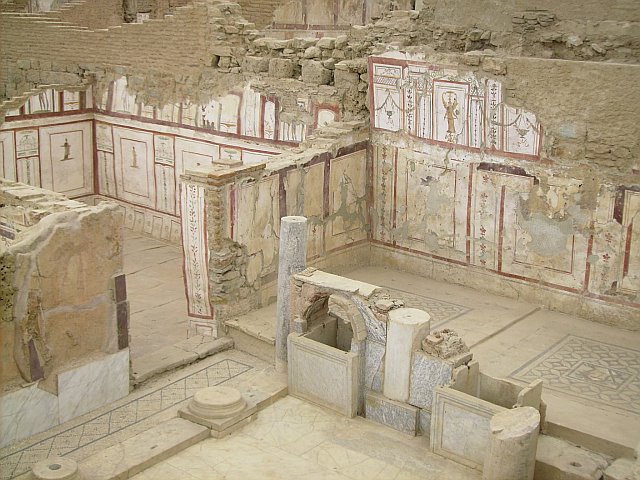 The ruins take three or more hours to explore. In the afternoons, Ephesus is crowded with guided tours. We began in the morning, as the pale – but already hot – Turkish sun began to simmer over the exposed ruins. A Turkish history professor moonlighting as a tour guide offered us his services.
The ruins take three or more hours to explore. In the afternoons, Ephesus is crowded with guided tours. We began in the morning, as the pale – but already hot – Turkish sun began to simmer over the exposed ruins. A Turkish history professor moonlighting as a tour guide offered us his services.
We came first to the Odeon. The government met here in the small, round theater; the Odeon also hosted plays, and could seat 1,500 spectators. In the nearby Prytaneion, worshippers prayed to Artemis, the city’s patron, beneath the eternal flame.
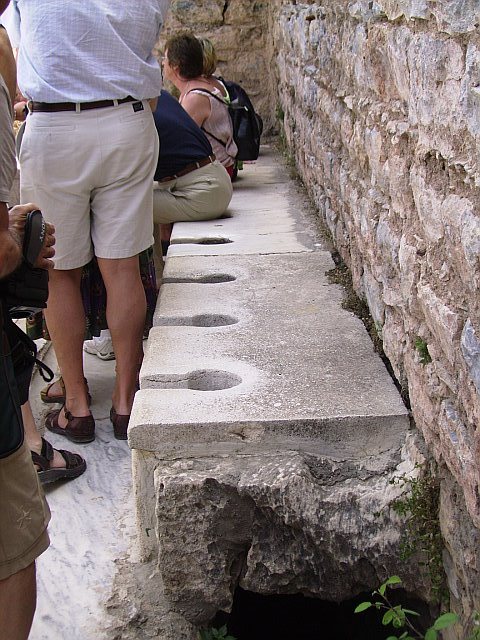 Across Celsus Road, an immense arch marks the remains of the Temple of Domitian. In addition to their goddess, the Ephesians worshiped their Emperors. After death, citizens erected immense temples to their former leaders; cities throughout the Roman Empire would vie for the honor of hosting an Emperor’s temple. Being the major port in Asia Minor, Ephesus provided a home for many temples in this Imperial cult.
Across Celsus Road, an immense arch marks the remains of the Temple of Domitian. In addition to their goddess, the Ephesians worshiped their Emperors. After death, citizens erected immense temples to their former leaders; cities throughout the Roman Empire would vie for the honor of hosting an Emperor’s temple. Being the major port in Asia Minor, Ephesus provided a home for many temples in this Imperial cult.
Just down the road, we encountered a more homely slice of ancient life. Not much remains of the town brothel, but a row of stone pit toilets provided a giggle. Across the street, archeological excavation continues on the Terrace Houses. Once homes of the city’s elite, they still have 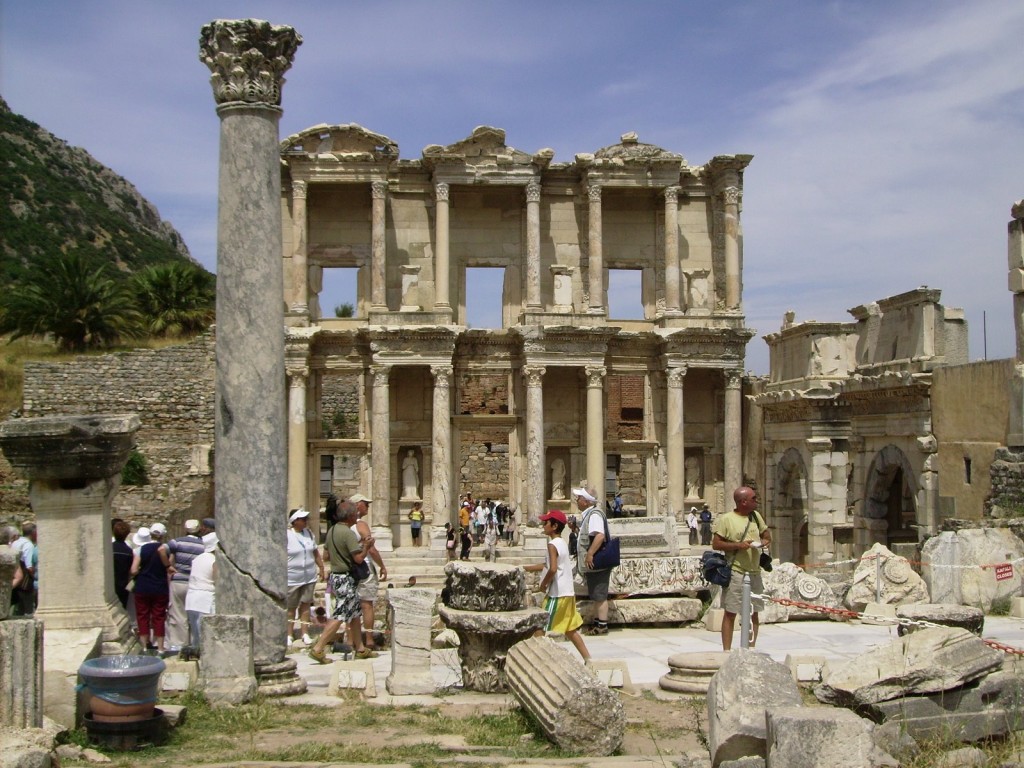 beautiful frescoes and mosaics. We paid a little extra to wind through the excavations on a catwalk, and marvel at the artwork in the crumbling living rooms.
beautiful frescoes and mosaics. We paid a little extra to wind through the excavations on a catwalk, and marvel at the artwork in the crumbling living rooms.
The ancient library, intricately carved, took my breath away. The restored façade stands two stories tall, and is covered with scrollwork, columns, and statue-filled niches. This library once housed thousands of scrolls. Perpendicular to the library across the square rises a gate, dedicated to the Emperor Augustus by two 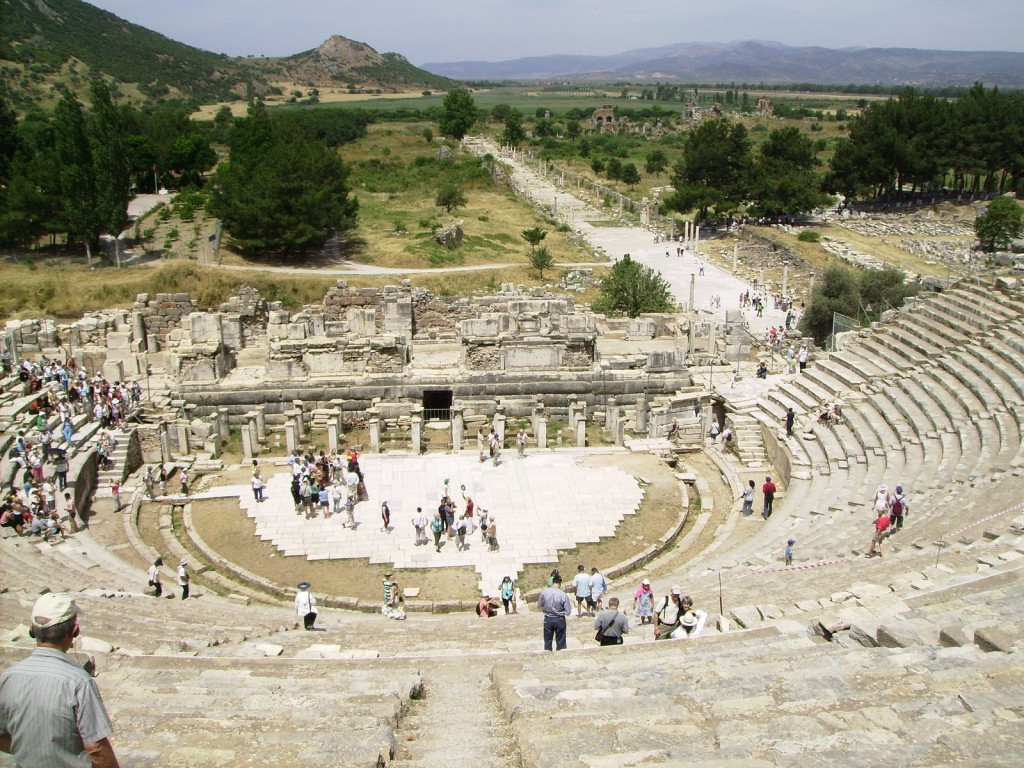 of his freed slaves. It marks the entrance to the wide, paved Marble Road, the commercial thoroughfare.
of his freed slaves. It marks the entrance to the wide, paved Marble Road, the commercial thoroughfare.
Our final stop, at the end of the Marble Road, was the immense amphitheater. A site of theater, gladiatorial battles, and other spectacles, the stadium can hold over 25,000 people. It rapidly climbs the hillside, and from the top seats, the ruins of Ephesus and the sparkling ocean beyond seemed tiny. We sat down on the top step. It seemed strange that such a grand city could now be just a collection of jumbled rocks. That is the great thing about ruins: threading between the cracks and gaps, our imaginations fill in the rest.


Comments